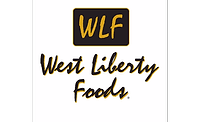Fabulous Food Plant: West Liberty Foods Westward, ho
Logistics demanded a fourth plant west of the Rockies, but West Liberty Foods seized the opportunity to upgrade its production flow and material-handling safeguards.

Copackers often are viewed as commodity suppliers, low-cost manufacturers that produce middle-of-the-road products as efficiently as possible. But West Liberty Foods Inc. (WLF) resists that model, and the facility it built in northern Utah is its attempt to establish best practices in food safety, production innovation and automation.
High throughput and flexible production drove much of the design in WLF’s Tremonton, UT plant, which opened in August 2007. The 230,000-sq.- ft. facility, designed and engineered by The Facility Group, was expected to meet the needs of West Liberty’s Western sandwich shop and supermarket customers until at least 2010. Instead, cranes have settled in as semi-permanent fixtures. The ready-to-eat meat processor already has completed a 25,000-sq.-ft. expansion to accommodate five additional slicing rooms and a second fabrication line. Gleeson Constructors handled the expansion and a wastewater pretreatment project. An additional expansion looms in the next few years.

Tremonton is the fourth location for the West Liberty, IA-based firm, which was founded in 1996 by the Iowa Turkey Growers Cooperative. Faced with the closure of a local Oscar Mayer plant that annually purchased their 3.5 million turkeys, 47 farmers formed the co-op and acquired the now 65-year-old facility. Two more Iowa locations were added before ground was broken in Tremonton in October 2006. No cost estimate has been released on WLF’s first greenfield project; given the near-continuous construction, the investment is a moving target.
Input was sought during Tremonton’s planning phase, partly to head off any fears the new facility would adversely impact the Iowa workforce. “If we were going to meet our expectations for enhanced food safety and associates’ comfort, we were going to have to spend a lot of time talking to our associates, our suppliers and even other meat companies,” notes Gerald Lessard, vice president and COO.
Four distinct areas comprise the Tremonton campus: fabrication and IQF packaging at one end, slicing cells at the opposite end and a 50,000-sq.-ft. cold storage facility wedged between. Chicken strips, patties, meatballs and other cooked products flow directly from fabrication into packaging and then to cold storage. Two-thirds of production involves deli meats extruded as 10-ft. logs that are cooked, chilled and loaded onto trucks for transport to the slicing area. West Liberty officials consider the added handling to be a competitive advantage. Cooked product is trucked from two plants to Mount Pleasant, IA for slicing, eliminating the possibility of cross-contamination between raw and cooked goods.
The oversized logs dictated facility and equipment design. They are almost double the standard length and presented numerous material-handling challenges. A German meat company pioneered 3-meter deli logs, and detailed discussions with its engineers predated the Tremonton project. Longer logs mean less scrap, greater product homogeneity and reduced contamination risk during handling, but they also require equipment modifications and floor-layout considerations. “Getting vendors involved early was critical,” says Lessard. “They were risking their professional reputations” if the project was unsuccessful. Quarterbacking the effort was Houston integrator M.W. Waldrop Company Inc. (See related story below.)
“It was a risk to go with the 10-ft. logs,” agrees Controls Engineer Chris Waldrop, “because it required all-new equipment that had to start up on the same day.” Seamless handling required close collaboration between equipment suppliers that oftentimes are competitors. “The difference here is that it was a requirement in the contracts,” suggests Rick Roedl, Tremonton’s engineering manager. “It involved not only the integration of their equipment but sophisticated training for our line technicians, operators and supervisors.” For some vendors, no such training previously existed.

Logistics of long
Modifications for the logs begin with the discharge conveyors for the log form/fill machines. Once loaded onto specially fabricated racks, product is moved into elongated smokehouses. These ovens feature a “walking floor” to drag the multi-ton racks into position. As a critical control point, proper documentation of each batch’s time, temperature and trace-back data is essential, Roedl notes. Accountability is built in with an electronic signature created when oven operators scan their RF badges before setting cook-time parameters.
After cooking and chilling, ready-to-eat logs are loaded onto refrigerated trucks for the drive to the other end of the complex. Ample space was provided to jockey the racks to a staging room where casings are stripped, and the logs are conveyed through a fry tunnel to develop a crust for slicing. Customized conveyors pivot the logs 180° for a return trip through a nitrogen tunnel to firm the logs’ interior. Logs then are routed to the 40-ft.-long clean rooms for slicing.
Positive air pressure is delivered through dedicated refrigerated air systems for each room. Each has its own water service and drainage system. Epoxy flooring with a silver-ion antimicrobial compound was installed instead of the sealed concrete found in the rest of the facility. To minimize the destructive potential of sanitation chemicals to epoxy finishes, a flooding system to clean and rinse the surface was incorporated, according to Project Manager Norm Hunt of The Facility Group. Except for vertical utility drops along the walls, conduit in the room is temporary and moves in and out as equipment changeovers are executed. “The details were done with the best practices in the industry in mind, beginning with the American Meat Institute’s sanitary-design principles,” says Hunt.
In sanitary design, the devil is in the details, and sealing every crack, crevice and potential bacterial harborage was a top priority, notes Plant Manager Dave Frett. Epoxy flooring requires more maintenance, but it fits a comprehensive food safety strategy. “Every little hurdle you put in place helps your process,” says Frett.
MAP and vacuum packaging systems are in place, and plant engineers worked with a local tool and die shop to build a machine to create prototype packaging for customer approval. “We pride ourselves in being able to react to a new customer need and make the change in a couple of days,” says Roedl. One option is dubbed Trio, a 5-oz. serving of three meats in a paper wrapper for sandwich-shop clients. WLF advanced the system with extremely close tolerances of slice dimensions and densities for three simultaneously sliced meats.
Sealed packages are conveyed to the case packing area, where workers eyeball them for imperfections. Potential leakers are conveyed back to the slicing room, passing through a sanitizing rinse, for rework. Otherwise, filled cases are conveyed to a final checkweigher before entering cold storage.
The next plant expansion will add 10 more slicing rooms. A second IQF line came on-line in September, joining another cavernous fabrication hall. The original IQF line now focuses on chicken patties and meatballs. The new line produces whole-muscle cuts and incorporates X-ray inspection machines from Marel Food Systems Inc.
Incoming breast meat is X-rayed and, if any bone or other contaminant is detected, routed to inspectors who remove it and send the meat through a second X-ray for final inspection. Previously, all meat was inspected by hand, requiring 10 inspectors. Automated inspection cut the number to five, speeded the process and improved performance. According to Einar Einarsson, president of Lenexa, KS-based Marel, studies indicate manual detection rates tail off as worker fatigue sets in, while “the machine is consistent.” Improved sensor technology has resolved problems in detecting bones in American poultry, which has low calcium content.
Marinating and cooking whole-muscle meat generates a higher value-added product than patties or meatballs. The challenge in Tremonton was defrosting raw materials sufficiently for inspection. Frozen blocks of 40-60 lbs. of meat are difficult to thaw in a refrigerated room, so the plant installed a defrosting tumbler from CFS. The unit uses a combination of steam and glycol jacketing to accelerate thawing to about eight hours. “The application of that technology wasn’t apparent to us until we built a plant 1,200 miles from our original operating environment,” says Lessard. Five additional defrost tumblers are being installed.

Tracking enhancements
In-process tracking was improved at Tremonton, with Sabetha, KS-based Bachelor Controls developing a SCADA system that interfaces with corporate’s Intellution ERP system. Scaled weights and case-count data are fed back in real time to operators to guide slicing-room adjustments if weights are out of tolerance. Work-order information is downloaded from headquarters to the plant’s SCADA, regulating the product type and slicing cell where the order is filled and driving label coding for accurate tracking and tracing.
Allen-Bradley PLCs on the floor are tied to software hosted in PCs. “When you have conveyors moving a case every second, the microsecond lag between the PC and PLC can be a problem,” notes Roedl. To lower the probability of failure, controls engineers designed the data network so the PLCs store some data until a lull in production when they can log it to a PC. “Half the integration challenge is communication quality and timing issues,” says Michael Bachelor. “You have to do the math on how many milliseconds each step is going to take.”
Enhanced food safety as well as labor reductions drove automation investment. Most post-sterilization handling by humans was eliminated. Workers still manually place stacks of sliced meat into packaging machine nests. Company officials made a conscious decision to involve operators because of their ability to inspect product for cosmetic defects. Heightened hygienic standards are in place to reduce the likelihood of contamination. Disposable accessories and specially designed encapsulation suits for workers are key safeguards.
Tremonton may be the most YouTube-ready food plant in the country. Vision systems are incorporated in the Weber slicing machines, and video cameras are mounted throughout, including two in each clean room. “If you put cameras in an existing building, there’s a rebellion,” says Operations Manager Kent Rogers. Because video monitors were in place when the plant opened, there hasn’t been any pushback, he says. A portable camera for troubleshooting in hard-to-access areas also is available. The system, supported by Integral Technologies, also is used for training and seminars delivered to the site via videoconferencing.

Cameras soon will play a social role. WLF operates a day-care center in downtown Tremonton for workers’ children. Child-parent videoconferencing during breaks is envisioned.
According to Lessard, worker welfare drove design features extending from locker areas and washrooms to the operating floor. In most plants, boot-wash stations are elevated. At Tremonton, they are recessed, producing a flat walking surface. Wind velocities in clean rooms were tempered to reduce human discomfort. Safety-oriented equipment modifications were engineered, such as a dual-lock setup on nitrogen tunnels so that a single worker could not dismantle metal panels for cleaning or inspection.
Job advancement opportunities are provided through a standardized test that measures mechanical aptitude and leadership skills. Successful candidates become line technicians and perform machine set-up and light maintenance. After a year, they can move to entry-level maintenance positions or supervisory jobs. “The quality of people coming through the program is very strong,” Roedl says.
The training mantra begins before anyone enters the production area. All workers and managers undergo eight hours of HACCP indoctrination, and an on-site trainer conducts regular refresher classes. “Everybody understands the principles and the reasons for doing what we ask,” says Frett. Specialists from Iowa State University, which helped develop the food safety program, conduct quarterly reviews.
Specialized off-site training has been developed for maintenance workers. Besides sending technicians off-site for robotics-control instruction, WLF provides workers instruction at a body-repair shop to hone their Bondo expertise to deal with the inevitable lift-truck dings to the facility’s insulated metal wall panels.
WLF rethought meat plant sanitation standards, moving to a low-pressure, high-volume approach to washdown. High-pressure washing tends to create an aerosol effect, spreading bacteria to walls and ceilings. Product sanitizing stations are strategically located, particularly for anything moving into the slicing cells.
Five maintenance crews serve the plant. Six skill levels, including electricians, programming specialists and top-tier mechanics, populate each crew. “Maintenance and sanitation are the keys to production,” Roedl insists. “When one of them has a problem, the whole plant has a problem.”
WLF’s other facilities are clustered within 60 miles of each other. Though Tremonton is half a continent away, the company had pre-existing ties to Utah. Two years ago, Norbest turkey brand’s marketing operations moved to West Liberty. The 125 growers in Utah and Nebraska who created Norbest have two processing sites in Utah, about 200 miles south of WLF’s facility. Before settling on Tremonton, WLF considered another Utah location closer to Norbest’s plants.
Business has grown briskly at WFL this decade, and the Western operation ratcheted up the sales trajectory. “It’s a new rung on the ladder,” reflects Lessard, though growth for its own sake was not the objective. Flexibility to meet new customer requests and do it in an elevated food safety environment drove Tremonton, and customer feedback suggests the goal was met.
For more information:
Michael Bachelor, Bachelor Controls Inc., 785-284-3482
David Dixon, The Facility Group, 770-437-7155
Einar Einarsson, Marel Food Systems, 913-888-9110, einar.einarsson@marel.com
Chris Waldrop, MW Waldrop Company Inc., 713-337-5600, chris.waldrop@waldropco.com
Engineers master logs' rhythm
Building customized food-handling equipment has been M.W. Waldrop Company’s focus for 48 years. The scope of the Tremonton project ranks among the most ambitious the second-generation Houston engineering firm has tackled. “It’s all one-off, custom-designed equipment in that plant,” geared toward removing manual handling wherever possible, points out Chris Waldrop. The project was a year-long assignment.
Case-packing and tray-handling systems are mainstays in Waldrop’s work, with robotics entering the mix four years ago. The articulated-arm machine that loads 10-ft. logs onto racks is the most dramatic piece of the Tremonton project. The ABB integrator “went through a few iterations” on the end-of-arm tool before fabricating one that could load the meat with minimal breakage. “Any time we damage a log, they lose yield,” Waldrop notes. Once a tool was built, it was field-tested in another WLF facility.
Compounding the transfer challenge were the different shapes and densities of the logs. The plant’s Tipper Tie fillers extrude straight and oval-shaped logs; slack-filled logs handle differently than denser logs. The solution was “a product smoosher” that presses down on the formed meat to stabilize it as it moves from the filler to the robotic staging area, says Waldrop.
Looking for a reprint of this article?
From high-res PDFs to custom plaques, order your copy today!







